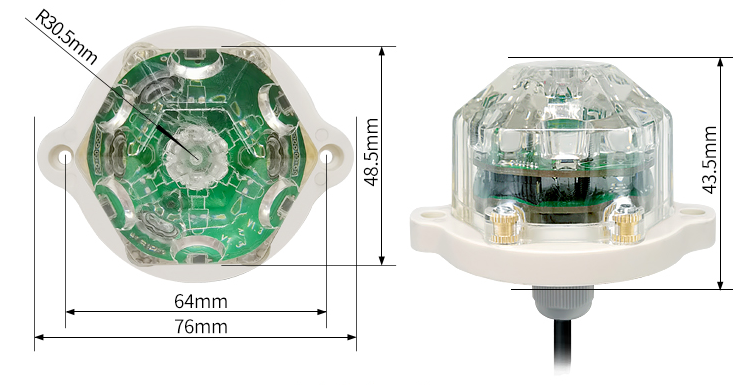Due to the strong regional and diurnal variation of rainfall, it was difficult to detect rainfall accurately in the past. After the establishment of modern scientific observation system in the West, many famous scientists, including Franklin, began to conduct in-depth research on automatic quantitative measurement of rainfall. Therefore, later appeared in different forms or principles of rain gauges. The scientists found that the accuracy of the rain gauge depended on its material, the size of the opening, the height of the opening above the ground and the surrounding environment. Today, most rain gauges are made of plastic that doesn’t break easily and is more durable.

What is a rain gauge?
A rain gauge is an instrument used to measure the amount of precipitation in a certain area over a period of time (the measurement of snowfall requires the use of a snow gauge). There are many types of rain gauges. Most rain gauges use millimeters as the unit of measurement, and sometimes the measurement results are in inches or centimeters as the unit. The reading of the rain gauge can be read manually or using an automatic weather station, and the frequency of observation can be changed according to the requirements of the collecting unit. In most cases, the collected rainwater will no longer be retained after observation, but there are also a few weather stations that will retain it as a sample for pollution level or other tests.
How does a rain gauge work?
The rain sensor working principle is actually very simple. The one in the picture above, like the seesaw model, is the rain gauge unit of measurement. This instrument will be connected to an electronic recorder. When the rainfall on it reaches a certain value, the weight of the rain will cause the seesaw to jump. One-click, whenever it beats, the electronic recorder will record a piece of data, how many points are totaled and how many pieces of data are transmitted to the computer, and then use the computer to calculate the overall data to form a statistical graph and a data graph, which is then formed into rainfall.
What is a rain gauge used for?
In terms of meteorology, the rain sensor can record the size of the current rainfall in time, which is very practical. The tipping bucket rain sensor in the rain gauge is a wired telemetry instrument that can continuously record the precipitation over time and measure the accumulated precipitation. It is divided into two parts: a sensor and a recorder, which are connected by a cable.
The siphon rain gauge is an instrument that can continuously record precipitation and precipitation time. The shape and size of the upper water funnel are the same as the rain gauge. The standard rain sensor is an instrument used to measure the accumulated precipitation over a period of time. The shell of the common standard rain sensor is transparent glass or plastic. For the area and shape of the container mouth, a water storage bottle is placed in the lower tube to collect rainwater.

Types of Rain Gauges
At present, there are a variety of rain gauges to choose from on the market according to different appearances and measurement principles. Some rain gauges can measure instantaneous rainfall, some measure total rainfall, some use mechanical principles, and some use optical principles. It basically measures rainfall. Although the performance is different, they all help you to obtain accurate information about the rainfall in the current area.